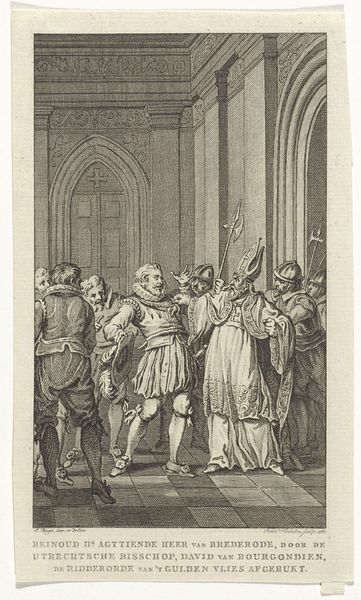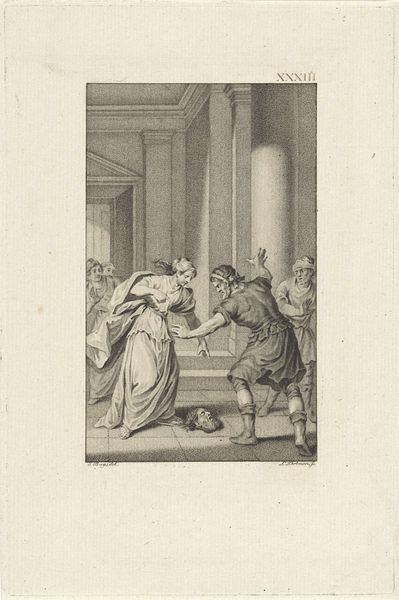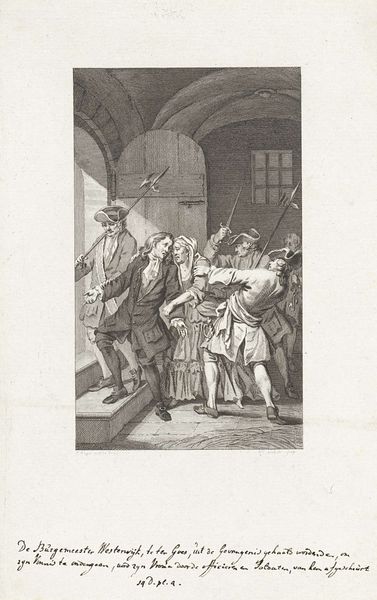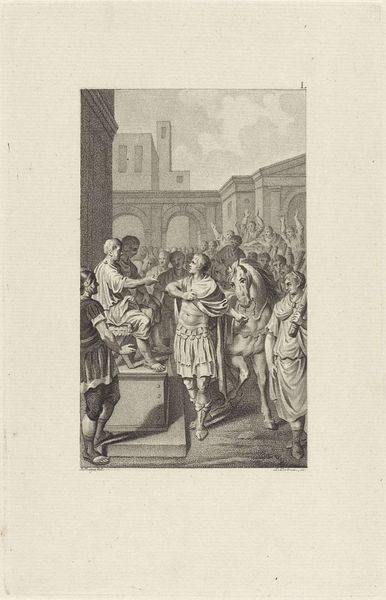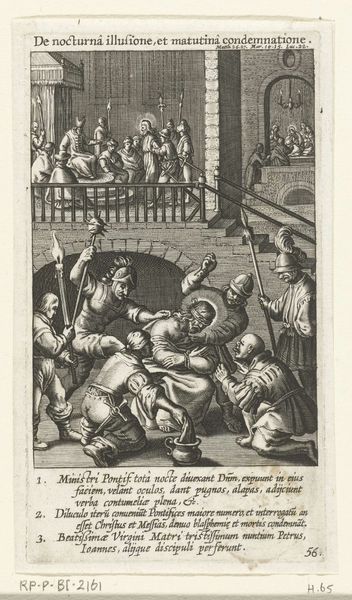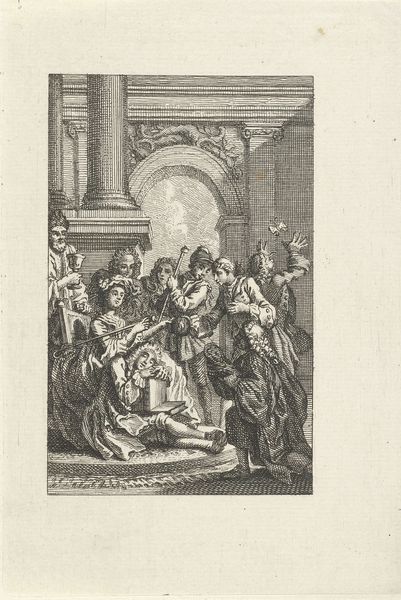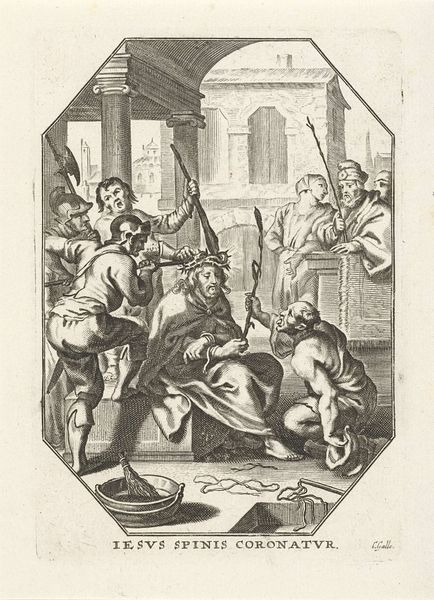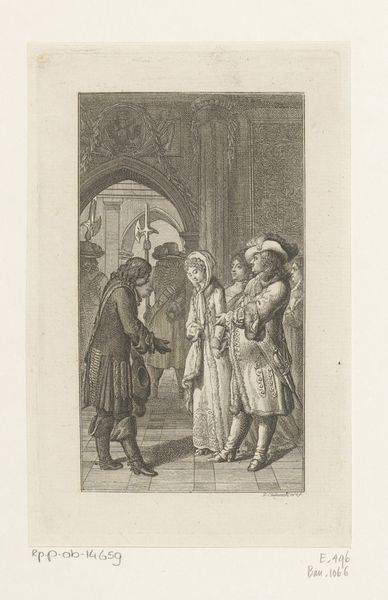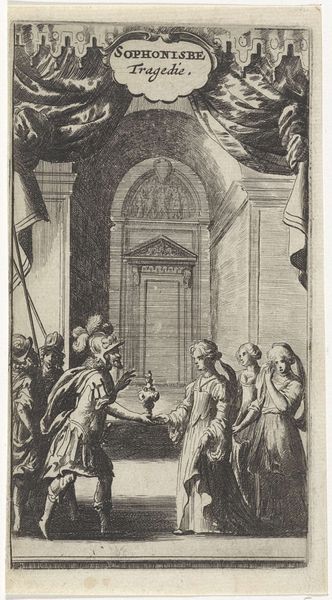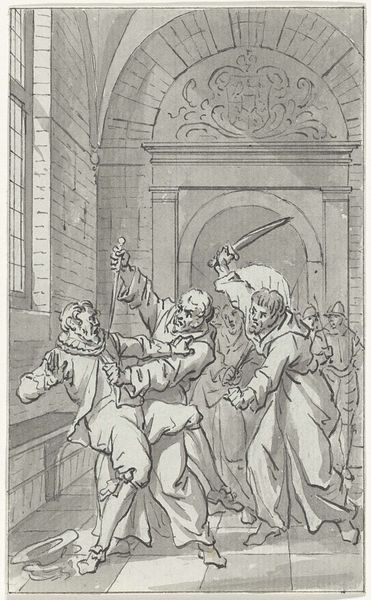
Dimensions: height 179 mm, width 111 mm
Copyright: Rijks Museum: Open Domain
Editor: So, this print by Reinier Vinkeles, made in 1791, is titled "Herman de Ruiter verovert Slot Loevestein, 1570," and depicts an intense struggle. It’s amazing the level of detail he achieved with what looks like etching or engraving. What aspects stand out to you the most? Curator: Considering the materiality and labor involved in creating this print, let’s think about its purpose. It's not merely illustrative. Prints like this were commodities, intended for a growing public. Editor: How does that commodity aspect influence how we should interpret the artwork itself? Curator: The medium—etching or engraving—allows for mass production and distribution of this dramatic historical scene. Who was consuming these images and why? These prints perpetuated a certain narrative around Dutch identity and history during a specific political moment. We must understand what made this imagery so popular and politically resonant at the time of its production and circulation. Notice the specific rendering of the architecture; how does this built environment also perform within a commercial setting? Editor: So, it’s less about the literal depiction of the event and more about what that depiction *did* culturally and economically? The print wasn't simply mirroring an event, it was participating in its making…and its selling? Curator: Precisely! How might its making – the engraver’s tools, skills, time and intention - intersect with that function? Furthermore, how does this reproductive medium contribute or detract from our traditional art-historical understanding of "originality"? These are vital considerations for thinking beyond face-value. Editor: This completely changes how I look at the print! I hadn’t considered its circulation and consumption as integral to its meaning. Curator: Indeed, thinking through materiality offers avenues toward critical re-assessment, transforming how we value not only the image but its enduring significance today.
Comments
No comments
Be the first to comment and join the conversation on the ultimate creative platform.

